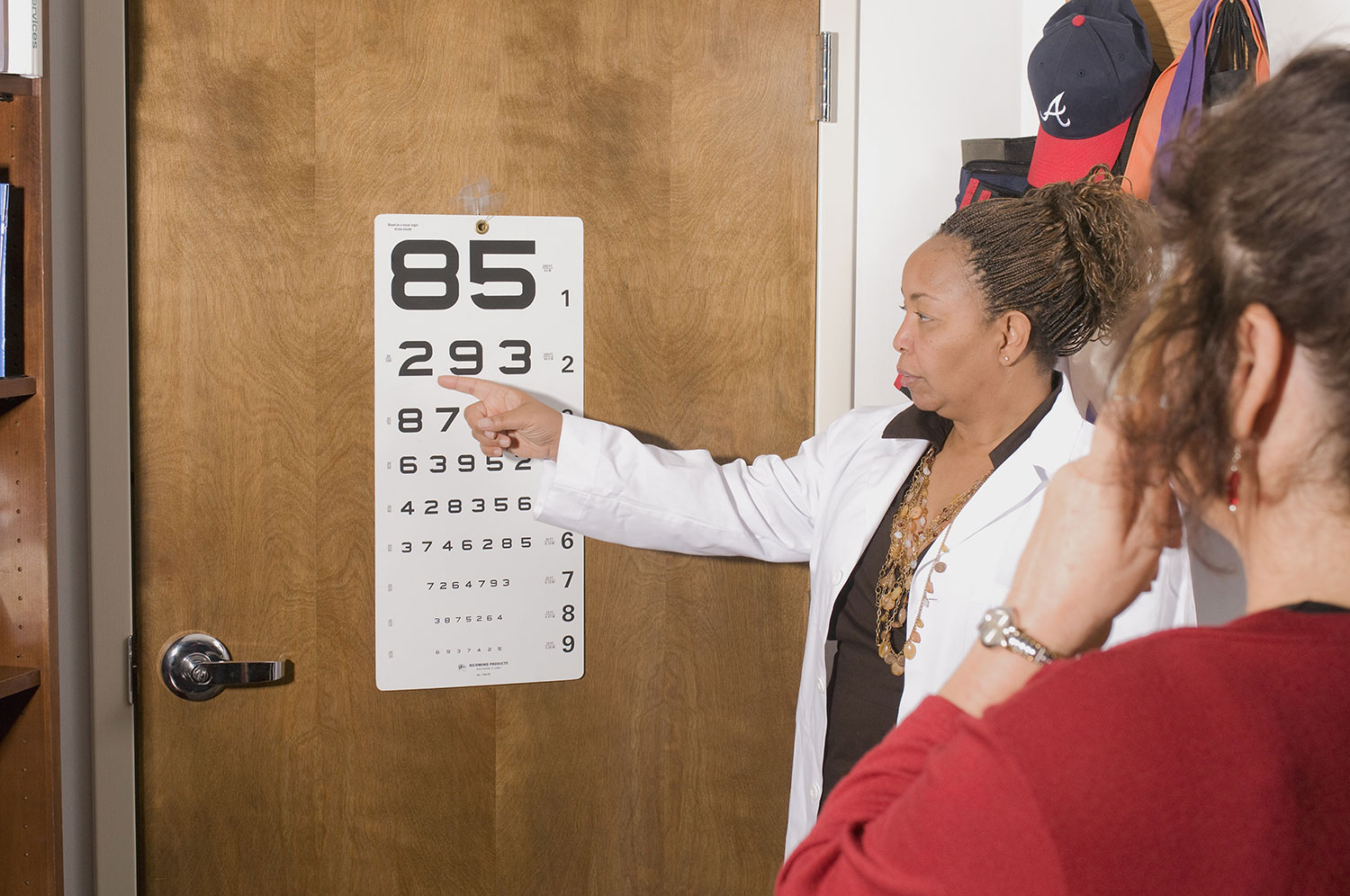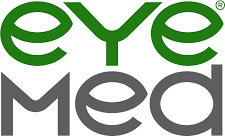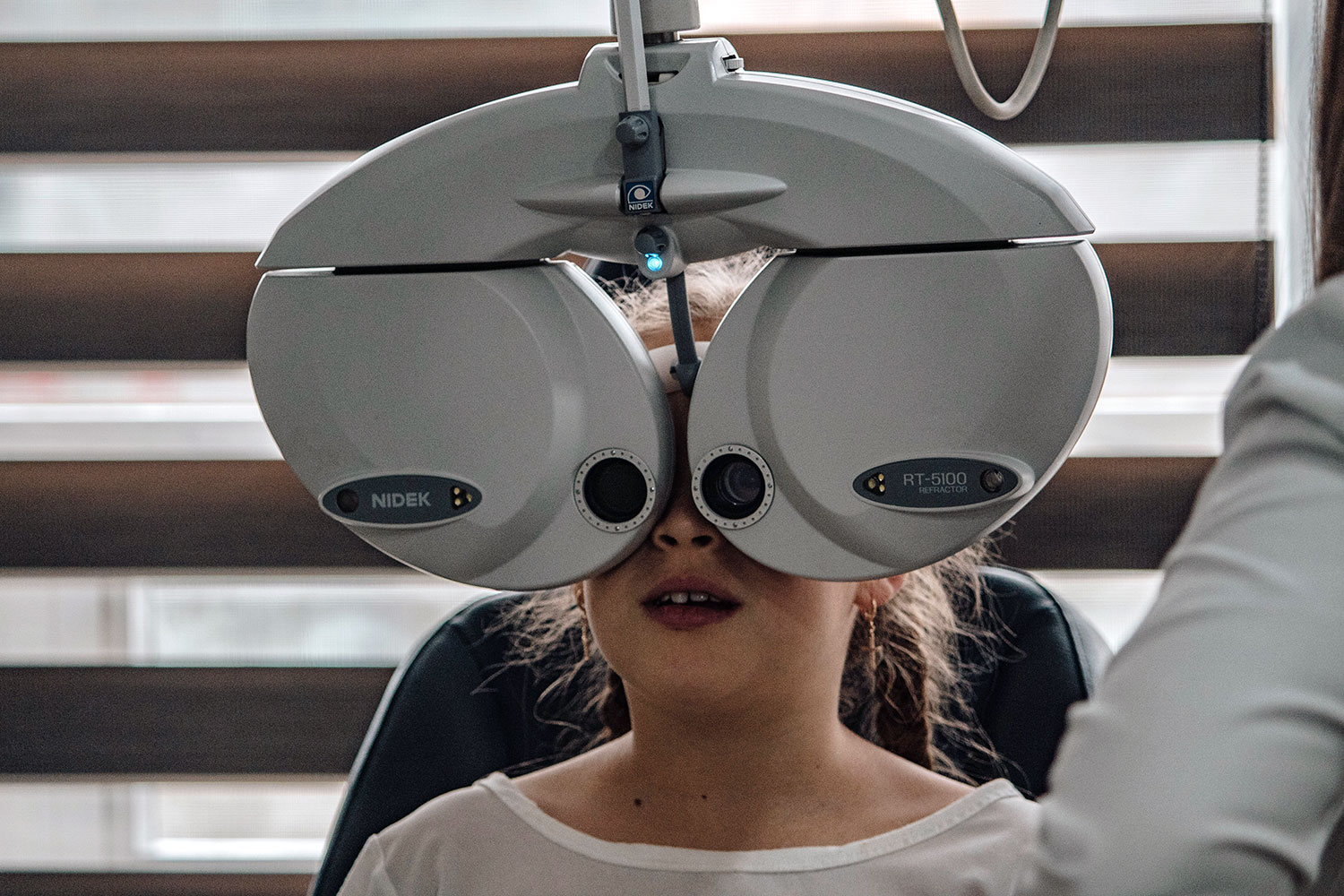Interested in vision insurance for your household? You can add a supplemental vision insurance policy to your current health care coverage. The costs of eye exams, corrective eyeglasses, and contact lenses can mean hefty bills for you without a quality vision coverage plan in place.
You have a great deal of choice when it comes to choosing a vision insurance partner, so we’ve narrowed the field a bit by outlining the best vision insurance companies today. We looked at the options that are most important to consumers, such as size of network, plans available, and out-of-pocket costs.
7 Best Vision Insurance Companies in the U.S.
- EyeMed
- Vision Service Plan (VSP)
- Davis Vision
- UnitedHealthcare (UHC)
- Direct Vision
- Humana
- Ameritas
When you start researching vision insurance policies, you’ll find that you have a lot of choices. While that generally works in your favor, it can also make the process of choosing a provider more overwhelming and confusing than it has to be. But when you start with a group of vetted and qualified providers in the first place, you can move forward with confidence.
The vision insurance companies listed here are well known for providing quality service and a variety of options. Once you have a stable base of good partners, you can begin examining plan details to determine which provider offers the best vision insurance for you and your household.
What Is Vision Insurance?

Since vision care isn’t typically included in most comprehensive health insurance plans, a supplemental vision insurance policy helps make sure you have access to vision care without incurring significant out-of-pocket costs. Services include regular eye exams, plus corrective items like eyeglasses and contacts, along with some eye surgeries that may become necessary. A good vision insurance policy can effectively offset vision-related charges that you’d otherwise be forced to pay out of pocket.
When you consider that more than 150 million Americans need some type of vision correction, plus millions with other vision-related disorders, it seems an easy decision to have vision insurance for you and your family. A simple eye exam, plus the price of eyeglass frames and lenses, can cost upwards of $350. Without a vision insurance policy, you’ll have to pay the full cost.
Vision Coverage for Children Under 19
One item of note is that the Affordable Care Act requires coverage for pediatric vision care, which means that children under age 19 who are covered under an ACA-compliant health care plan will also receive coverage for eye exams, vision screening, and eyeglasses at no additional charge. All health care plans sold in the Health Insurance Marketplace include vision care for children, but only a few plans include vision coverage for adults. This requirement does not apply to private insurance plans.
7 Best Vision Insurance Companies in 2025

Many different companies offer vision insurance options. Let’s take a look at some of the best and most reliable companies for vision insurance.
1. EyeMed

Pros
- Plans start at $5 per month
- Access to more than 70,000 in-network providers, both online and in-store
- No waiting period before benefits begin
Cons
- Not available in every state
- Higher premiums for family coverage
Vision Exam Covered: Yes
LASIK Discount: 15%
Frame Discount: 35%
Contact Discount: 15%
App Support Available: Yes
EyeMed offers access to more than 66,000 independent eye doctors, optical retailers, and online providers, allowing you to choose from a wide variety of quality brands. With EyeMed, vision consumers can choose from three different plan levels, ranging from $5 to $30 per month. Benefits kick in immediately with no waiting period.
EyeMed plans allow patients to access everything from regular vision exams to eyeglasses and contacts, plus additional discounts and out-of-network benefits. According to EyeMed, its members save an average of 71% off the retail price of eye exams and glasses when they visit in-network eye doctors. EyeMed currently serves more than 66,000 members through its three different plan levels, and coverage is available either independently or through employer plans. EyeMed plans are available in 48 of the 50 U.S. states.
Why We Chose EyeMed
EyeMed is a popular choice for vision insurance for several reasons. First, they offer a wide range of plans. This means people can pick a plan that suits their needs and budget. Whether you need basic coverage or something more comprehensive, EyeMed likely has an option for you.
Another big plus is their large network of eye doctors and specialists. This makes it easy for people to find a nearby doctor they can trust. Plus, EyeMed covers many different types of eye care services. This includes routine eye exams, glasses, and contact lenses. Some plans even offer discounts on more advanced services like LASIK.
The convenience of EyeMed is also a big draw. They make it easy to understand and use benefits. People can also manage their plan online, which saves time and hassle.
EyeMed Vision Insurance Plans
EyeMed offers three different vision insurance plans, each tailored to meet various needs and preferences. Let's explore the details of each plan.
The EyeMed Healthy plan is ideal for those seeking basic vision care. It covers comprehensive eye exams with a copay and offers significant discounts on frames, lenses (single vision, bifocal, trifocal), and contact lenses. This plan is great for anyone who needs routine eye care and wants to save on glasses or contacts. Additionally, it may include other discounts and some out-of-network benefits, adding value for those who might need services outside the EyeMed network.
For more comprehensive coverage, the EyeMed Bold plan steps up to provide essential vision benefits. This plan covers eye exams after a copay and gives a fixed allowance for frames and contact lenses, offering more than just discounts. Lenses of various types (single, bifocal, trifocal) are covered with a copay. Like the Healthy plan, Bold also includes additional discounts and potential out-of-network benefits, making it a solid choice for those who need a bit more than the basic coverage.
The most extensive option, EyeMed Bright, is perfect for families or individuals seeking broader vision care. This plan encompasses all the benefits of the Bold plan but with a more generous frame and contact lens allowance. It covers comprehensive eye exams with a copay and offers covered allowances for both frames and contacts. The inclusion of additional discounts and out-of-network benefits makes it an excellent choice for those requiring a wider range of vision services and products.
Each of these plans offers a different level of coverage and options, catering to a variety of needs and preferences. From basic coverage with the Healthy plan to more extensive coverage with the Bright plan, EyeMed provides a range of choices to fit different vision care needs.
EyeMed Pricing
EyeMed offers vision insurance plans at different price points to fit various budgets. The EyeMed Healthy plan is their most affordable option, starting at $5.00 per month. This is a great choice for those looking for basic vision coverage at a low cost. The EyeMed Bold plan, offering more comprehensive benefits, starts at $17.50 per month. It's suited for those needing a bit more than the basic coverage. For the most extensive coverage, the EyeMed Bright plan starts at $30.00 per month. It’s ideal for those who require a wide range of vision services.
2. Vision Service Plan (VSP)

Pros
- Only not-for-profit vision insurance company in the United States
- Large provider network with small copays
- Includes discounts on lens customizations
Cons
- Allowance can only go towards contacts or eyeglasses, not both
- Allowance is on the smaller side for insurance providers
Vision Exam Covered: Yes
LASIK Discount: $1,000
Frame Discount: 20%
Contact Discount: 20%
App Support Available: Yes
Vision Service Plan (VSP) is the largest provider of vision insurance in the nation. VSP plans start at $13 per month and serve more than 80 million Americans. With VSP, you can choose an individualized plan that works for you, so you can save on regular eye exams, lens enhancements, additional frames, and more.
VSP members have access to more than $3,000 in savings by becoming a member of VSP’s program, and benefits begin immediately, with no waiting period. While VSP offers a standard vision plan, you also have the option to build your own customized plan that better matches your individual needs. VSP offers benefits in all 50 U.S. states and boasts a network of more than 40,000 providers. Please note that you cannot combine any VSP plan with existing Medicaid plans.
Why We Chose VSP
Vision Service Plan (VSP) is a popular choice for vision insurance for several reasons. First, they're known for their large network of independent eye doctors. This means you have many options to find a doctor that's right for you. VSP also focuses on offering personalized care, ensuring that you get services tailored to your specific vision needs.
Another big reason people choose VSP is their coverage. They offer plans that cover a range of services. This includes eye exams, glasses, and contact lenses. Some plans even cover specialized services, like lens enhancements. This comprehensive coverage makes VSP a great choice for those who need more than just basic eye care.
VSP also makes it easy to use your benefits. They have simple plan options and straightforward benefits. This makes understanding what's covered and using your benefits stress-free. Plus, VSP often offers exclusive member extras and discounts. This can save you money on top of what's covered by your plan. These features make VSP a top choice for anyone looking for quality vision insurance.
VSP Vision Insurance Plans
VSP offers a range of vision insurance plans, each with unique benefits and features to cater to different needs.
Standard Plan: This plan is far from just basic—it's VSP's most popular option. It covers eye exams with low copays, and offers generous allowances for frames or contacts. Members also benefit from discounts on various lens enhancements, including progressives, scratch resistance, and light-to-dark tinting. The convenience of using this plan at the eye doctor’s office, online, or at retail locations only adds to its appeal.
EasyOptions Plan: Building on the Standard plan, EasyOptions adds more flexibility. In addition to all the Standard benefits, members can choose one of three covered upgrades without any copay. These upgrades include progressives (no-line multifocal), light-to-dark tinting, or a higher frame or contacts allowance, adding an additional $80 for a total allowance of $230. This plan is great for those who appreciate having options tailored to their specific needs.
Enhanced Plan: As VSP's premium offering, the Enhanced Plan includes all the Standard benefits and more. It's designed for those who prefer low or no copays on multiple lens enhancements. Members enjoy lower copays on enhancements like scratch-resistant ($0), impact-resistant ($0), anti-glare ($15), and progressive (no-line multifocal) lenses ($55). This plan is ideal for those who want comprehensive coverage and are willing to pay a higher monthly premium for reduced out-of-pocket costs at the eye doctor.
EyewearOnly Plan: For those who already have a current vision prescription and just need glasses, the EyewearOnly plan is an economical choice. It offers generous allowances for frames or contacts and discounts on popular lens enhancements, such as progressives and light-to-dark tinting. This plan is perfect for those who don’t require an eye exam, but still want savings on eyewear.
Each of these plans from VSP is designed to offer a different level of coverage and flexibility, ensuring that there’s an option that fits various vision care needs and preferences.
Pricing
VSP's vision insurance plans are priced to accommodate a variety of needs and preferences, with monthly costs ranging from $11 to $75. The pricing of these plans is influenced by several factors. First, your location plays a key role; different areas have varying costs associated with vision care. Age is another factor, as vision care needs can change as you get older. The number of people enrolled in the plan is also important—individual coverage will cost differently than family plans that cover multiple people. Finally, your coverage preferences, such as the choice of plan and specific benefits you opt for, will impact the final price.
3. Davis Vision

Pros
- Includes access to Your Hearing Network for hearing aid discounts
- Includes one-year breakage warranty on eye glasses
- Two plan options with large network of providers
Cons
- Coverage only available through any employer
- Lots of complaints about long wait times for customer service
- Lower coverage limits
Vision Exam Covered: Yes
LASIK Discount: 40-50% off the national average price of traditional LASIK
Frame Discount: 20%
Contact Discount: 10%
App Support Available: Yes
Davis Vision is a long-time player in the vision insurance business, with a history dating back more than 50 years. Davis also boasts a network of more than 100,000 in-network providers and partnerships with all top eyewear retailers. Davis Vision insurance plans start at $12.50 per month. There are three different plan options, with the Premier version costing members $23 per month. According to Davis, 98% of its members report a high level of satisfaction with the coverage and customer service they receive.
Davis Vision is a well-respected vision insurance provider, largely due to its view of eye health as part of a comprehensive wellness plan that includes hearing aids and diabetic programs not typically covered by medical insurance. Plans are available for either individuals or employers.
Davis Vision does not offer coverage in all 50 U.S. states. However, with a simple tool on the Davis Vision website, you can enter your zip code to determine whether your area is eligible for coverage.
Why We Chose Davis Vision
Davis Vision is a popular choice for vision insurance for several reasons. One of the main attractions is their extensive network of eye care providers. This network includes not only optometrists and ophthalmologists but also many retail partners, making it convenient for members to find a provider they like, close to home or work. This accessibility is a big plus for anyone who values convenience in managing their eye health.
Another reason people choose Davis Vision is their focus on comprehensive care. They offer plans that cover a wide range of vision services, from routine eye exams to glasses and contact lenses. Some plans even include special benefits like discounts on LASIK or other elective procedures. This comprehensive approach means that members can feel confident they're getting the full spectrum of eye care they need.
Davis Vision Insurance Plans
Davis Vision offers two main vision insurance plans through employers in the United States: the Basic Plan, known as Fashion Excellence, and the Extended Plan, known as Designer Gold. Each plan is designed to meet different vision care needs.
Basic Plan (Fashion Excellence): This plan is centered on providing superior vision care services while offering significant savings. Members are eligible for benefits every 12 months from the last service date. Under the Fashion Excellence plan, participants can receive:
- A comprehensive eye examination at a Preferred Provider Organization (PPO).
- One pair of eyeglass lenses, complete with a one-year unconditional breakage warranty. This is a unique feature that adds value and peace of mind for members.
- Either contact lenses or frames, along with an evaluation and fitting. It's important to note that the plan covers either glasses or contact lenses, but not both simultaneously. This plan is well-integrated within Davis Vision's network, which includes the majority of major eye care retailers.
Extended Plan (Designer Gold): The Designer Gold Plan steps up the benefits by offering more generous allowances than the Basic Plan. Participants in this plan receive:
- 100-percent coverage for eye examinations once every 12 months, providing comprehensive eye care without additional costs.
- Higher limits for frames and contact lenses, allowing for a broader choice and higher quality options. Similar to the Fashion Excellence plan, the Designer Gold Plan also covers either glasses or contact lenses, but not both at the same time.
Both plans are tailored to cater to different levels of vision care requirements, with the Basic Plan focusing on essential services and savings, and the Extended Plan offering more comprehensive coverage with higher allowances. These options ensure that patients have access to quality vision care that fits their specific needs and preferences.
Pricing
Davis Vision offers three coverage options in their Fashion Excellence and Designer Gold Plans, each catering to different needs. For individual coverage under the Fashion Excellence Plan, the cost is approximately $7 per month. If an individual opts to include one dependent, the price increases to around $12.50, and for full family coverage, it's about $17.
The Designer Gold Plan, offering more comprehensive benefits, starts at roughly $10 per month for an individual. The cost for an individual plus one dependent under this plan is approximately $17, and for a family, it's around $24.
Exact plan pricing will vary on location.
These pricing structures provide flexibility, allowing individuals to choose a plan that best fits their situation, whether it's just for themselves, for them and a dependent, or for their entire family.
4. UnitedHealthcare (UHC)

Pros
- Ability to combine vision and dental plans
- Allows you to choose between glasses and contacts or glasses or contacts coverage
- No age minimums or maximums
Cons
- Coverage varies from state to state
- Cannot cancel during first year
Vision Exam Covered: Yes
LASIK Discount: Discounts available at select LASIK partners
Frame Discount: 20-40% depending on plan and retail partner
Contact Discount: 10% at UHCcontacts.com
App Support Available: Yes
UnitedHealthcare’s vision insurance is an especially good option for patients who need LASIK surgery. In fact, with UHC’s plans, patients can get up to 40% off the cost of the LASIK procedure. United Healthcare has partnered with QualSight LASIK, which offers more than 900 correction locations across the country.
UHC boasts more than 75 years of experience servicing over 46 million people in all 50 states. Currently, 1.3 million physicians practice within the UHC network.
UHC offers two basic plans: one for patients who wear either contacts or glasses and an additional plan option for patients who wear both glasses and contacts. Premiums are $10.40 and $14.30, and neither plan requires a waiting period before benefits begin. UHC vision insurance premiums also can be combined with other existing UHC policies, such as dental or health, which will lower your overall cost for premiums. In addition, UHC vision plans provide a double allowance per 12-month period for frames and contacts, which is essentially unheard of with any other provider.
Why We Chose UnitedHealthcare
UnitedHealthcare is a popular choice for vision insurance for several reasons. One of the key attractions is their extensive network. They have a wide range of eye care providers, including both private practitioners and well-known retail chains. This means members have plenty of options to choose from when it comes to finding the right eye doctor or optician, ensuring convenience and accessibility.
Another major draw for UnitedHealthcare is the variety of plans they offer, designed to meet diverse needs and budgets. Whether you're looking for basic coverage or more comprehensive benefits, UnitedHealthcare likely has a plan that suits your requirements. Their plans often cover essential services like eye exams, glasses, and contact lenses, and some offer additional perks like discounts on LASIK or other elective vision procedures.
UnitedHealthcare also stands out for its focus on preventive care and overall eye health. Their plans often include screenings and exams that help in early detection and management of eye conditions, which can be crucial for maintaining good vision. Additionally, they make managing and using your vision benefits straightforward, with user-friendly online tools and clear explanations of benefits.
UnitedHealthcare Vision Insurance Plans
UnitedHealthcare offers two distinct vision insurance plans, Vision Plan A and Vision Plan B, each tailored to different vision care needs. The availability of these plans may vary based on your location.
Vision Plan A is ideal for those who only need either glasses or contact lenses, not both. The plan features include:
- Affordable copays for in-network eye exams, facilitating routine eye care.
- An allowance for frames, available once every 12 months, with members covering any additional costs beyond this allowance.
- Lenses covered annually with a manageable copay.
- An option for contact lenses, offering flexibility for those who prefer contacts over glasses.
Vision Plan B provides more comprehensive coverage, suitable for individuals who need both glasses and contact lenses. Its key features are:
- A similar structure for in-network eye exam copays as Plan A, ensuring affordability.
- Coverage for frames with an allowance, similar to Plan A, with the member covering extra costs.
- Annual coverage for lenses, maintaining the same copay structure as Plan A.
- A noteworthy addition to this plan is the coverage for contacts in addition to glasses, enhancing its value for those who need both.
Both plans are underwritten by Golden Rule Insurance Company and are a part of the UnitedHealthcare Vision network. They are designed to meet varying requirements: Plan A for those who need either glasses or contacts and Plan B for those who require comprehensive coverage for both. This allows individuals to choose a plan that best suits their specific vision care needs, with benefits that align with their preferences.
Pricing
The pricing for UnitedHealthcare's vision insurance plans varies based on several factors, including your location, the number of individuals covered, and the specific plan you choose. Generally, the monthly cost for these plans ranges from $8 to $16 for individuals. This variation in pricing reflects the different levels of coverage provided by each plan and the geographical differences in healthcare costs.
For instance, a plan that covers only an individual will typically be at the lower end of this price range. In contrast, plans that cover more people, like a family plan, might be at the higher end. Additionally, the more comprehensive the plan in terms of benefits, the higher the cost might be.
5. Direct Vision

Pros
- Prescription sunglasses included in coverage
- Ability to choose between Eye Med and Vision Service Plan networks
- No waiting periods
Cons
- Not all plans available in every state
- Vision exam only covered once every 12 months
Vision Exam Covered: One per year
LASIK Discount: 5-15% on LASIK or PRK, depending on LASIK partner
Frame Discount: 20% off remaining balance; 20-40% off additional frames
Contact Discount: 15%
App Support Available: No
Direct Vision insurance provides affordable vision insurance coverage both online and through a network of more than 12,000 agents across the country. With Direct Vision, patients can access two different levels of plans, both of which provide in- and out-of-network benefits, with no waiting period required. Monthly premiums start at $11.53 per month and copayments are generally $15-25 for most vision care services.
Members enjoy a wide range of choices when it comes to eye doctors, while also receiving a discount on LASIK services and a generous eyeglass frame allowance. Direct Vision benefits are available in all 50 U.S. states.
Why We Chose Direct Vision
Direct Vision sets itself apart in the vision insurance landscape with its focus on offering choice and flexibility. What makes Direct Vision unique is the option for members to select between two leading vision care networks: VSP and EyeMed. This choice is a significant advantage, as it caters to individual preferences and lifestyles, allowing members to align their vision care with their specific needs.
The ability to choose between VSP and EyeMed networks offers Direct Vision members unparalleled flexibility. VSP is known for its wide network of independent eye care providers, ideal for those who prefer a more personalized approach to eye care. EyeMed, meanwhile, is recognized for its association with numerous renowned optical retailers, offering a vast array of eyewear options and the convenience of easily accessible locations. This dual-network option ensures that members have the freedom to opt for a network that resonates best with their vision care priorities.
Direct Vision also excels in creating a smooth and intuitive member experience. Navigating through their vision insurance options is straightforward, removing any complexities typically associated with choosing and using health benefits. This simplicity is especially appealing to those who appreciate a clear and direct approach to healthcare services.
Direct Vision Insurance Plans
Direct Vision offers a variety of vision insurance plans through the EyeMed and VSP networks, each with unique features. It's important to note that the availability of these plans may vary based on location.
EyeMed Access Plan A:
- This plan offers an eye exam every 12 months.
- Provides lenses and frames every 12 months, more frequent than Plan B.
- Includes the same $150 frame or contact lens allowance as Plan B, but available annually.
- Offers 5-15% savings on LASIK or PRK services.
- Accepted at the same major outlets as Plan B.
VSP Choice Plan A:
- Similar to the EyeMed Plan A, it includes an eye exam every 12 months.
- Lenses and frames are also available annually.
- Comes with a $150 frame or contact lens allowance each year.
- Offers 20% off additional glasses or sunglasses.
- Accepted at major retailers like Walmart, Costco Optical, Sam’s Club, and Visionworks.
EyeMed Access Plan B:
- Provides an eye exam every 12 months.
- Offers lenses and frames every 24 months.
- Includes a $150 frame or contact lens allowance every 24 months.
- Members can enjoy a 5-15% savings on LASIK or PRK services.
- This plan is accepted at major outlets like Target Optical, Pearl Vision, LensCrafters, and more.
VSP Choice Plan B:
- Also offers an eye exam every 12 months.
- Lenses and frames are available every 24 months.
- Comes with a $150 frame or contact lens allowance every 24 months.
- Provides a 20% discount on additional glasses or sunglasses.
- Accepted at various locations including Walmart, Costco Optical, Sam’s Club, and Visionworks.
These plans offer varying frequencies of eye care and eyewear benefits, with Plan A options providing more frequent coverage than Plan B options. The choice of plan will depend on individual needs for eye care frequency, preferred service providers, and additional benefits, like LASIK savings or discounts on extra eyewear.
Pricing
Direct Vision offers a range of vision insurance plans with varying pricing structures as of The monthly charges for individual coverage start as follows:
EyeMed Access Plan A: This plan begins at $15.02 per month for an individual. For a +1 plan, the monthly charge is $27.64, and for a family plan, it's $41.31 per month.
VSP Choice Plan A: Starting at $15.97 per month for an individual, the price for a +1 plan is $29.38 per month, and for a family plan, it increases to $43.91 per month.
EyeMed Access Plan B: For an individual, this plan starts at $11.53 per month. If you opt for a +1 plan, which covers one additional family member, the cost increases to $21.22 per month.
VSP Choice Plan B: The initial monthly rate for an individual is $12.22. For the +1 plan, the price goes up to $22.48 per month. For families, the plan costs $31.71 per month.
Remember, these prices are starting points, and actual costs can vary based on factors such as location and the age of the insured. This structure offers flexibility, allowing you to choose a plan that aligns with your specific needs and budget.
6. Humana

Pros
- Ability to bundle with dental and hearing
- Covers major medical eye problems
- Relatively high lens allowances (depending on plan)
Cons
- Not available in every state
- Premiums and plan vary on age and location
Vision Exam Covered: Yes
LASIK Discount: 15% at preferred providers, 5% everywhere else
Frame Discount: 20%
Contact Discount: 15%
App Support Available: Yes
Humana is the third largest health insurance provider in the U.S. Its supplemental vision insurance offers some tremendous benefits, especially for patients who wear corrective contact lenses. For example, several plans include contact lens allowances with no deductible. Overall, the company’s approach to vision insurance is straightforward. Humana offers three different plan levels, which range in price from $13 to $16, plus a $35 initiation fee. If you bundle your vision insurance with a dental plan, the $35 initiation fee is waived.
With Humana vision insurance, you can expect low copays, access to out-of-network benefits, and convenient locations for eye exams and when shopping for corrective glasses or contact lenses. Humana’s robust network offers access to more than 23,000 in-network providers in convenient locations, including Sears Optical, LensCrafters, Pearle Vision, Target Optical, and JCPenney Optical. Vision care benefits from Humana are available in all 50 U.S. states.
Why We Chose Humana
Humana stands out in the vision insurance market primarily for its singular, comprehensive vision plan that caters to a broad range of eye care needs. This one-plan approach simplifies the decision-making process for potential members, making it an appealing choice for those who prefer a straightforward and all-encompassing vision care solution.
The strength of Humana's vision plan lies in its broad coverage, which typically includes essential services like routine eye exams, eyewear allowances, and discounts on procedures like LASIK. This comprehensive coverage ensures that members have access to diverse vision care services under one umbrella plan, eliminating the need to choose from multiple options.
Additionally, Humana's vision plan is supported by a vast network of eye care providers. This network includes a variety of optometrists and ophthalmologists, as well as many well-known retail outlets, offering members convenience and flexibility in choosing their preferred service provider.
Humana places a significant emphasis on preventive eye care within its plan. Routine screenings and eye exams are part of the package, emphasizing the importance of early detection and ongoing eye health management. This aspect of the plan is particularly beneficial for members who value preventive health measures as a part of their overall wellness strategy.
Humana Vision Insurance Plans
Humana's Vision Plus plan is a comprehensive vision insurance option, with its availability and specific details varying by location. Here's an overview of the key benefits offered by the plan:
No Waiting Period: Members can immediately access their benefits upon enrollment, as there is no waiting period associated with this plan.
Vision Exam with Dilation: The plan provides affordable options for vision exams, including dilation, with varying copays based on the provider chosen. This ensures routine eye care is both accessible and cost-effective for members.
Frames: Members receive an allowance for frames, with a portion covered and the remainder subject to a percentage payment. The allowance and subsequent cost-sharing can vary, especially when using PLUS providers, enhancing the value of the plan.
Lenses – Single Vision: The plan includes coverage for single vision lenses with a copay. Additionally, members can benefit from other lens options and savings, providing flexibility and choice in eyewear.
Contact Lens Fit and Follow-Up: The plan covers contact lens fitting and follow-up appointments, emphasizing proper eye health and comfort, with varying copay options.
Contact Lenses: Members are entitled to an allowance for contact lenses, after which a percentage of the costs is covered. This benefit is designed to make contact lens use more budget-friendly.
Additional Allowances and Discounts: The plan offers allowances for either frames/lenses or contact lenses on an annual basis, mainly focusing on services provided by in-network providers.
Overall, the Humana Vision Plus plan is tailored to provide substantial vision care benefits, balancing significant allowances with manageable copays. The plan is structured to be both comprehensive and flexible, catering to a wide range of vision care needs while offering the convenience of PLUS provider options and in-network benefits.
Pricing
Humana offers a single vision insurance plan, with pricing that varies based on two main factors: the number of people covered and the location. The monthly cost for this plan ranges from $11.49 to $52.99. This range reflects the difference in cost between individual coverage at the lower end of the spectrum and family coverage at the higher end.
The price will also vary due to location; factoring in the different costs of healthcare services across different areas. This means the same plan might cost more in one region compared to another, reflecting the local cost of living and healthcare expenses.
7. Ameritas

Pros
- Choose between Eye Med and Vision Service Plan networks
- Ability to bundle with dental and hearing benefits
- No enrollment fees
Cons
- Main focus is financial services, not vision insurance
- Claims process and customer service options are limited
Vision Exam Covered: Yes
LASIK Discount: 15% off LASIK or PRK
Frame Discount: 20%
Contact Discount: 15%
App Support Available: Not for vision insurance
Ameritas is a comprehensive health insurance company offering vision insurance, dental insurance, and hearing care products to all 50 states. Patients who sign on with Ameritas can begin using their benefits immediately, with no waiting period.
Ameritas offers affordable monthly premiums, some starting as low as $8.86 per month. With its robust stable of resources, Ameritas offers several vision insurance plans for individuals and families. Ameritas consistently earns awards for its high level of customer service.
Why We Chose Ameritas
Ameritas vision insurance is highly regarded for its customizable approach to network selection, a feature that stands out as a key reason why many choose it for their vision care needs. One of the unique aspects of Ameritas is the ability for members to choose between two of the largest and most respected networks in vision care: VSP and EyeMed. This choice empowers members to tailor their vision insurance experience based on their preferences and needs.
The option to choose between VSP and EyeMed networks allows members to access a wide range of eye care professionals and services. Whether they prefer the extensive reach of VSP, known for its large network of independent providers and focus on personal care, or the diverse offerings of EyeMed, which includes many well-known retail chains and a variety of options, members can select the network that best aligns with their lifestyle and eye care preferences.
This flexibility in network selection adds significant value to Ameritas vision insurance. It ensures that members are not just getting comprehensive coverage, but also access to a network of providers that they are comfortable with and that can best meet their specific vision health requirements. Whether it’s finding a convenient location, a preferred doctor, or access to a wide range of eyewear options, the choice between VSP and EyeMed gives members control over their vision care experience.
Ameritas Vision Insurance Plans
Ameritas offers vision plans with varied benefits and deductibles, tailored to meet different eye care needs. Here's a general overview of each plan's key features:
PrimeStar Choice Vision Plan with VSP Choice Network:
- This plan includes a deductible for eye exams and eyeglass materials.
- Coverage frequency includes annual exams, eyeglass lenses or contacts, and frames.
- Eye exams are covered both in-network and out-of-network, with in-network coverage being more comprehensive.
- Eyeglass materials, including frames and various types of lenses, have specific allowances for in-network and out-of-network services. The plan also offers coverage for elective and medically necessary contact lenses.
- Lens options and coatings like standard polycarbonate, tints & dyes, scratch-resistant, anti-reflective, and ultraviolet protection are available with member costs varying in-network.
PrimeStar Select Vision Plan with EyeMed Access Network:
- This plan has a slightly higher deductible for both eye exams and eyeglass materials compared to the VSP Choice Network plan.
- Benefits include exams every 12 months, with eyeglass lenses or contacts and frames covered every 24 months.
- Coverage details for eye exams and eyeglass materials are similar, with full in-network coverage and capped out-of-network allowances.
- The plan covers elective and medically necessary contacts, with specific allowances for both in-network and out-of-network providers.
- In-network member costs for various lens options and coatings are provided, with the emphasis on offering a range of choices to suit different needs.
Both plans provide a mix of comprehensive coverage options and flexibility, catering to a variety of vision care requirements. The specifics of deductibles, allowances, and member costs for lens options and coatings can vary based on location and plan selection, offering adaptability and personalization to meet individual needs.
Pricing
Ameritas offers vision insurance with varying rates depending on the coverage and number of people insured. Here's a brief overview of the estimated monthly rates for most states, excluding Florida (FL), Minnesota (MN), and Mississippi (MS):
Choice Vision Rates:
- For an individual policyholder, the rate starts at approximately $16.34 per month.
- For a policyholder plus one dependent, the starting rate is around $30.07 per month.
- For a policyholder with two or more dependents, the monthly rate begins at $44.94.
Select Vision Rates:
- The monthly rate for an individual policyholder is about $10.67.
- For a policyholder plus one dependent, the rate starts at $19.63 per month.
- For a policyholder with two or more dependents, the estimated starting rate is $29.34 per month.
These rates are sample estimates and may vary based on the specific coverage chosen and the number of people covered under the plan. This pricing structure allows for flexibility and enables individuals and families to select a plan that aligns with their vision care needs and budget.
What Does Vision Insurance Cover?

Individual coverage limits will vary according to the specific vision insurance plan you purchase. Most vision insurance companies offer a variety of plan levels. However, in general, you can assume that your vision insurance will cover a few basic items. For the most part, you can count on full or partial coverage for annual eye exams, eyeglass lenses, frames, and contact lenses. Some vision insurance providers may offer higher-tier plans that include things like appointments for contact fittings, lens protection, and even LASIK surgery. Keep in mind that some plans may cover only certain brands or include price limits for frames and contacts.
Many plans also include discounts on lens upgrades, such as:
- Anti-glare coating
- Scratch-resistant coating
- Polycarbonate lenses, which are stronger and thinner than standard lenses
- Transition lenses, which darken when exposed to daylight
- Progressive lenses, which are bifocal lenses with no line
What Does Vision Insurance NOT Cover?
It’s important to note what vision insurance does not cover. Typically, you are not protected from lost or damaged glasses unless you’ve purchased an upgraded warranty. Some non-prescription glasses, such as readers, may also not be covered. You can expect to pay out-of-pocket if you have more than one routine eye exam per year, or need an experimental or investigative procedure. Also, if a treatment to the eye is deemed medical in nature, coverage may fall under your health insurance policy instead of your vision insurance policy.
How Much Does Vision Insurance Cost?
The cost of vision insurance varies widely depending on the vision insurance company. The cost of your insurance will depend largely on the specific plan you decide to purchase. However, most plans come with fairly reasonable premiums. As a general rule, you can expect to pay anywhere from $5 to $15 per person per month for a basic vision insurance plan. Higher-tier plans will cost more, though it’s unusual to find monthly premiums higher than $30.
Like most insurance plans, the higher your monthly premium, the lower your copay when you pay for services. Some vision insurance providers may also charge an enrollment fee. Before you sign on with a particular partner, make sure you understand the full scope of costs.
5 Types of Vision Insurance Plans

Vision insurance plans can be structured in several different ways. There are actually five different types of vision insurance plans.
Preferred Provider Organization (PPO) Plan
With this type of plan, eye care services are provided through an approved network of select health care providers. You may also use out-of-network specialists, but you’ll pay more in the form of higher co-pays, higher deductibles, or non-discounted charges from providers.
Health Maintenance Organization (HMO) Plan
This kind of coverage limits eye care services to those provided by doctors who either contract with or work directly for the HMO. An HMO plan will not cover out-of-network eye care services except in cases of emergency. In addition, an HMO may require that you work or live within its service area in order to qualify for coverage.
Indemnity Plan
An indemnity insurance plan is commonly referred to as “traditional” insurance. This plan allows patients to choose a vision care provider with no detrimental effect on reimbursement. Under this type of plan, the insurance carrier pays for some or all of your vision care.
Point of Service Plan (POS)
A Point of Service plan incentivizes you to get your vision care at a particular service location. Specifically, you will be charged less if you use hospitals, doctors’ offices, and other health care providers who are part of the plan’s network. Under this type of plan, you must get a referral from a primary care doctor to see a specialist of any kind.
Vision Discount Plan
A vision discount plan is similar to vision insurance, but the mechanics of how it works are slightly different. With a vision discount plan, which you may also hear referred to as a vision savings plan, the patient receives a discount on vision services after joining a particular plan group. When you join a vision discount plan, you become a member of a large collective that has negotiated discounted fees with a network of vision care providers. Think of it like a Sam’s Club or a Costco membership. You pay a membership fee to join, and then you receive discounts that, in the best case, surpass the cost of membership.
With some vision discount plans, you can also access services from eye care providers who are not in the group’s network. In these cases, you will usually need to pay for services in full and then request reimbursement from the vision insurance company. It’s important to understand any discount plan’s policies in this area, especially if you think you may often access out-of-network care.
Vision Insurance vs Vision Discount Plan
When it comes to vision insurance or a vision discount plan, which is better? The answer depends largely on your vision care needs. Vision discount plans and vision savings plans typically cost less up front per year than traditional vision insurance policies, but you may end up paying more out-of-pocket costs for vision care visits and corrective glasses or contacts.
Any type of vision care coverage – whether employer-provided, individual vision insurance, or a vision discount plan – covers a different set of services at varying levels. When you’re shopping for a vision care plan, look for coverage of the services you and your family members will need. For example, if you wear corrective glasses, research the coverage for both eyeglass frames and lenses. If you wear contact lenses, find out how often you can have them replaced and what types of lenses are covered under any plan you’re considering. For LASIK or any other eye surgery, find a plan that covers the procedure.
How To Choose the Best Vision Insurance

As with homeowners insurance, auto insurance, and health insurance, it’s in your best interests to shop around and do your research when choosing a vision insurance policy. There are several key items to keep in mind. Carefully itemize your vision care needs so that you have an accurate accounting of the services and types of coverage that you require. For example, if you’re contemplating having cataract surgery or LASIK surgery, you need more insurance coverage than someone who’s just looking to cover an annual eye exam. If you already have an eye doctor you trust, talk to them about your vision needs and how to make sure your vision insurance covers everything essential for you.
When researching policies, consider the benefits on an annual basis. This may be harder than it sounds. For example, some vision insurance plans allow for an eye exam and a pair of glasses every two years, while other plans offer a vision exam each year but frames only every two years. This fact may not immediately be noticeable, so if you see an unusually low price, it’s important to understand the full terms of your agreement.
Be sure to understand the vision plan’s network of eye doctors. Under most plans, you will only receive full benefits if you visit an in-network eye doctor. If you already have an eye doctor that you know and love, check whether they are an in-network provider. If you’re looking for an eye doctor, try to choose a plan with a robust network of eye doctors so you can find an eye doctor who’s right for you.
Make note of the allowance your plan provides for eyeglass frames. Some plans may only offer generous allowance on their in-house brand of frames, while others offer a consistent allowance, no matter the frames you choose. It’s important to understand your options when it comes to selecting eyeglass frames covered by your insurance. Take the time to fully research any exclusions and price limits that come with your vision insurance plan.
Also, check whether your vision insurance provider charges any type of enrollment fee. Many times, a provider is able to promote low monthly premiums because they charge a substantial enrollment fee. Verify the full financial obligation you’re taking on before you enter into an agreement with a vision insurance provider. Make sure you understand when your vision insurance benefits become effective. While some providers allow you to use your benefits immediately upon sign-up, others may insist upon a 30-day or even longer waiting period before your benefits become active.
Purchasing vision insurance is a smart move, but it’s important to pay attention to the fine print. With the right insurance plan, you and your household can receive quality vision care while avoiding the high costs of eye exams, corrective eyeglasses, and contact lenses.






